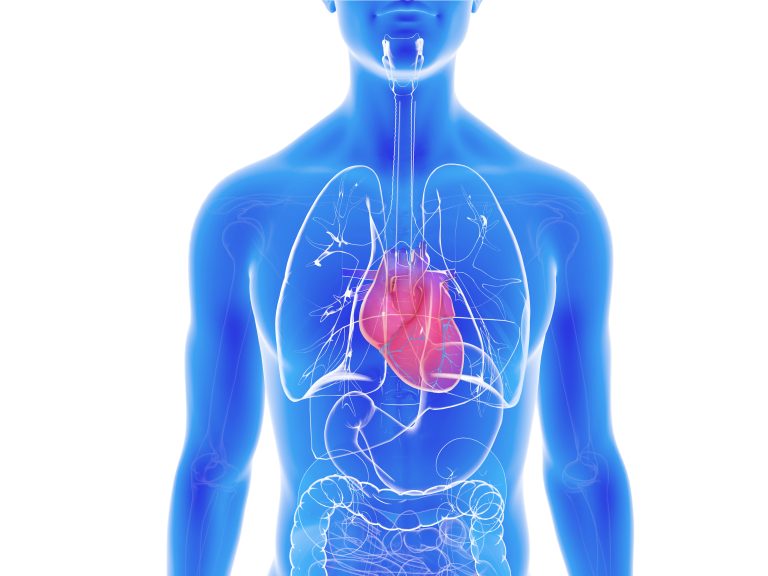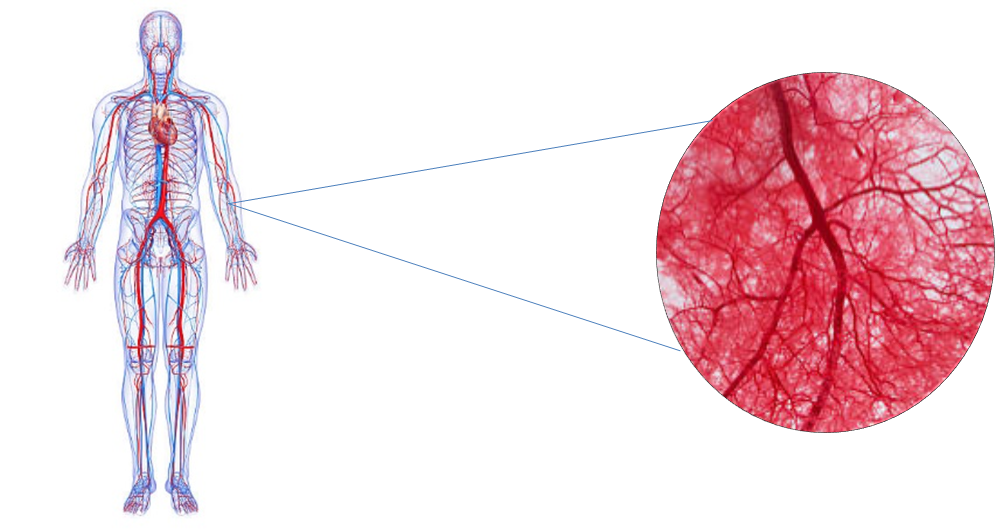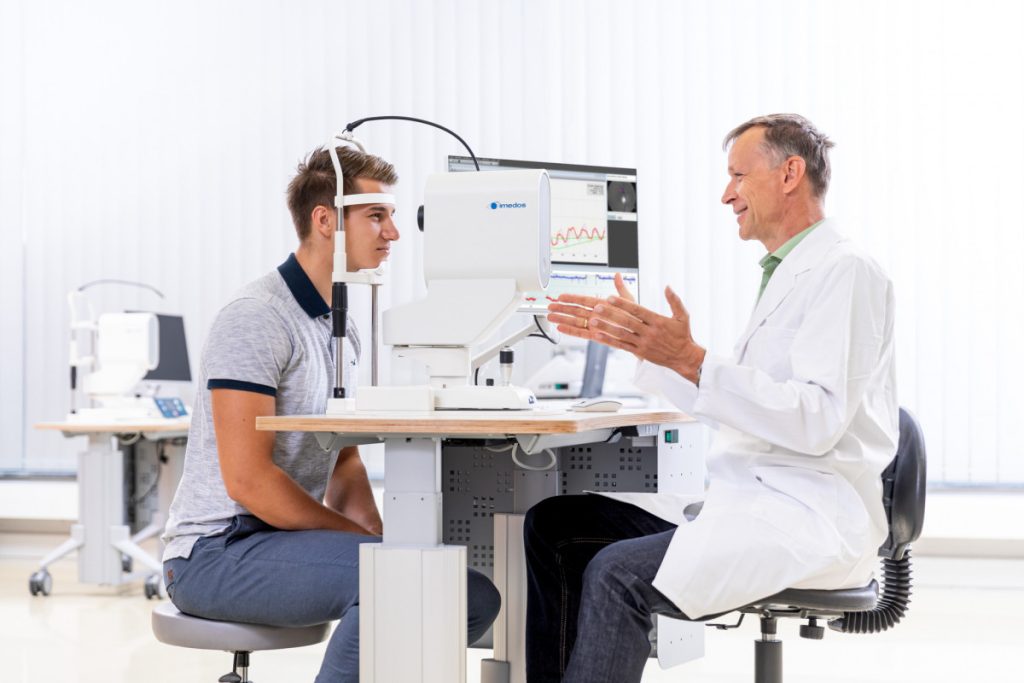Technology for vascular health
Detect cardiovascular diseases years in advance – when they are still preventable!
Microcirculation is life

More than 80% of cardiovascular diseases can be prevented if the risk factors are identified and eliminated in time.
But most people don’t know their own cardiovascular risk.
Cardiovascular diseases are the most common cause of death worldwide
The microcirculation is the functionally crucial endpoint of the cardiovascular system
Despite the importance of the microcirculation to human health, accurate noninvasive measurements have not been possible in the past.
We offer new perspectives for diagnostic care.

26% Macrocirculation
74% Microcirculation
Recognize cardiovascular changes years in advance, even before they become clinically manifest and are usually still curable!
Functional vascular changes can be detected using specific risk markers – long before morphological lesions are visible.
With Imedos retinal vascular analysis technology, you set the gold standard in your research and benefit from a high level of scientific recognition.
Our product areas
Our algorithms for static vessel analysis allow a non-invasive and contact-free examination of the morphology of retinal vessels. This is associated with general vascular health and the global state of microcirculation and is therefore an integral part of modern cardiovascular diagnostics .
Our dynamic vessel analysis is a globally unique method for the non-invasive examination of the function and autoregulation of retinal vessels using video sequences. Flicker light-modulated diameter changes along the vessels are recorded and analyzed in a time-variant manner on the retina.
With the RCrodent systems, Imedos offers the only commercially available solution for non-contact imaging and fluorescein angiography for the smallest eyes. We provide you with the tools for simple static and dynamic examination of the microcirculation , including on the animal model.
Ophthalmodynamometry
With the IOPstim system, Imedos is the only provider to offer a simple and painless increase in intraocular pressure as a prerequisite for the gentle measurement of retinal venous pressure for improved research into eye diseases such as glaucoma.
Cardiology
In addition to the important and efficient assessment of cardiovascular risk, the methods of retinal vascular analysis are also suitable for assessing endothelial function and vascular autoregulation, which opens up further areas of research. For example, there is a discrepancy between standardized risk scores and the occurrence of coronary heart disease.
Ophthalmology
Impaired blood flow in the eye is often the cause of the occurrence or progression of many eye diseases. Imedos' technology makes it easier to investigate these vascular components and check the influence of therapies.
Neurology
Pathologies of the microcirculation are associated with diverse clinical pictures in neurology. Therefore, the parameters of Retinal Vessel Analysis are suitable to draw conclusions about the risk of stroke, the severity of cerebral vascular diseases or other neurological diseases such as Alzheimer's disease.
Cardiometabolic prevention
The aim of cardiometabolic prevention is to prevent or delay the development and manifestation of vascular diseases at an early stage. The parameters of retinal vascular analysis offer new possibilities to extend the established gold standards of macrovascular diagnostics through microcirculation.
Nephrology
Recent studies have shown associations between changes in the retinal vessels, arterial hypertension and renal changes. An example of this are results showing the correlation between venous dysregulation and mortality in patients with end-stage chronic renal failure. In these studies, our Dynamic Vascular Analysis represents a novel scientific tool to improve risk stratification.
Hypertensiology
Around 1.3 billion people worldwide suffer from hypertension. However, as this disease is usually asymptomatic in the beginning, a good half of these patients are unaware of their illness and the associated risk. The microvessels of the retina are very sensitive to changes in blood pressure and thus often provide the first clues to development or pre-existing disease.
Our users
"The software is really intuitive and offers clinicians a much greater scope of practice in the care of their patients. Being able to record accurate changes in retinal vessel diameter and link this with a patient's cardiovascular risk profile will make a huge difference in the level of care that we can offer our patients going forward."
Dr. Christian French
Consulting Optometrist in Kibworth Harcourt & Specialist Optometrist at Kettering General Hospital United Kingdom"As an ophthalmologist, I had heard about the retinal vascular analysis method many years ago and was familiar with the approach. However, I only realized the comprehensive importance and benefits of the screening tool for assessing vascular health after a dramatic experience in my own family."
Dr. med. Ute Hunger
Niedergelassene Augenärztin Frankenberg (Sachsen)"Unfortunately, hypercholesterolemia is a problem that is still far too underestimated by many colleagues today. In addition to routine diagnostics, retinal vascular analysis helps us to identify patients at risk at Jena University Hospital in order to optimize treatment at an early stage and prevent cardiovascular events such as heart attacks and strokes."
Prof. Dr. Oliver Weingärtner
Oberarzt am Universitätsklinikum Jena Klinik für Innere Medizin I Interventionelle Kardiologie, Angiologie und spezielle internistische Intensivmedizin Präsident der Deutschen Gesellschaft zur Bekämpfung von Fettstoffwechselstörungen und Ihren Folgeerkrankungen DGFF (Lipid-Liga) e.V."Static retinal vessel parameters are useful surrogate markers for cardiovascular risk. VesselMap offers rapid, repeatable semiautomated analyses of retinal vessel parameters for research and clinical purposes."
Dr. Rebekka Heitmar
Department of Optometry and Vision Sciences, Centre for Vision across the Life Span, University of Huddersfield United Kingdom“Für die klinische Kreislauf-Forschung ist eine hoch reproduzierbare Messung der Reaktion retinaler Gefäße auf vasoaktive Substanzen von höchster Bedeutung. Mit dem IMEDOS-System steht ein derartiges Messverfahren zur Verfügung, welches sich sowohl zur individualisierten Therapie einzelner Patienten als auch für klinische Studien an Kollektiven mit unterschiedlichen vaskulären Erkrankungen nutzen lässt.”
Prof. Dr. med. Joachim E. Nasemann (Facharzt für Augenheilkunde) & Prof. Dr. med. Martin Middeke (Facharzt für Innere Medizin)
Interdisziplinäres Durchblutungslabor CIRCULAB Munich"As an ophthalmologist, I am often referred patients by cardiologists. They ask me to assess the vascular condition (AV ratio) of their patients in order to consolidate their decision on antihypertensive therapy when the data situation is uncertain. The AV ratio, which previously always had to be estimated subjectively, can be measured with the Imedos device. When I look back at my patient files and compare the measured AV ratio (Imedos) and the estimated AV ratio (me), I realize how well the money for this device was spent."
Dr. med. Matthias Malt
Niedergelassener Augenarzt in KölnThe dynamic retinal vessel analysis by Imedos has been an instrumental part of our research to understand vascular contributions to cognitive decline in aging and age-related diseases. Considering the fact that eye is the part of the central nervous system that is located outside of the cranium, assessment of dynamic changes in the retinal vasculature in response to photoreceptor stimulation provides a unique approach to directly visualize neurovascular responses in the brain. Our on-going clinical studies and clinical trials in young and aged healthy participants, as well as in participants with age-related diseases, indicate that dynamic retinal vessel analysis may provide an important tool for identifying individuals at risk for vascular cognitive impairment and dementia.
Andriy Yabluchanskiy, MD, PhD
Assistant Professor Center for GeroScience and Healthy Brain Aging Department of Neurosurgery University of Oklahoma Health Sciences Center„Through many years of research in cooperation with Imedos, it was possible to progress the methodological development of the technical basis for the vascular analysis of the retina. In particular, the use of electro-optical principles in the Imedos Dynamic Analyzer enables a more patient-friendly provocation of the retinal microcirculation, while at the same time maintaining the quality of the analysis.”
Prof. Dr.-Ing. Sascha Klee
Head of the Department of Optoelectrophysiological Medical Technology Ilmenau University of Technology„Intraocular pressure is an important risk factor in ophthalmology. In glaucoma in particular, however, vascular factors such as disorders of vascular autoregulation and reduced blood supply to the optic nerve play an equally important role. These vascular parameters can be examined non-invasively with Dynamic Vessel Analysis.“
Dr. med. Cengiz Türksever
Senior Physician, Co-Head of Glaucoma Northwestern Switzerland Head of Glaucoma Diagnostics Vista Eye Clinic BinningenNews
Microcirculation in microgravity
Imedos is currently on another exciting mission: together with scientists from the University of Düsseldorf, we are once again investigating the behavior of the microvessels of th
Off to bed and keep your eyes peeled for space medicine
Imedos technology for retinal vessel analysis is part of the latest bed rest study of NASA and DLR. During space missions, astronauts regularly experience extreme situations that a
The eye tells more than a thousand words
Preventing strokes by looking in the eye? This sounds futuristic, and yet something similar is already possible today. Our retinal vessel analysis devices allow the examination of
Current study: Does the functional analysis of retinal vessels allow statements on the progression of COVID-19?
The University Hospital Jena (UKJ) and the Jena-based manufacturer of medical devices Imedos Systems GmbH have joint forces to determine whether the functional analysis of vessels
Retinal vessel analysis and obesity
Retinal Vessel Analysis and Obesity: static vessel analysis delivers innovative method to assess therapeutic success in obese patients Almost a quarter of all adults in Germany suf
Hypertension in childhood
Specialist article provides new insights: Development of high blood pressure can be detected as early as in childhood According to a new study from Switzerland using the method of
Targeted identification of high-risk individuals for severe progressions of COVID-19
Imedos Static Vessel Analysis: eye scan enables targeted identification of individuals at risk for severe COVID-19 progression Despite initial easing of lockdowns and restrictions
Imedos takes off: Vascular analysis in weightlessness
Astronauts and jet pilots regularly put themselves in extreme situations that can affect your health and trigger ailments. Das German Aerospace Center (DLR) is constant
Shooting date with MDR Thuringia
At the end of last year, we received an interesting inquiry from Mitteldeutscher Rundfunk (MDR): The editors were interested in our technology of retinal vessel analysis. They woul












